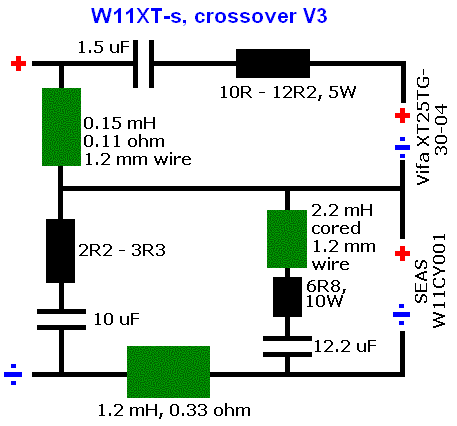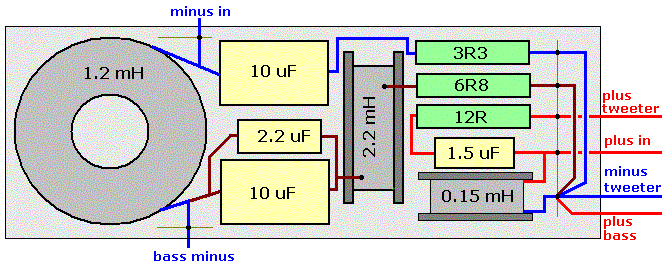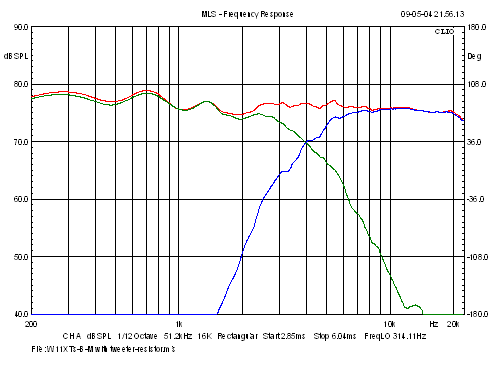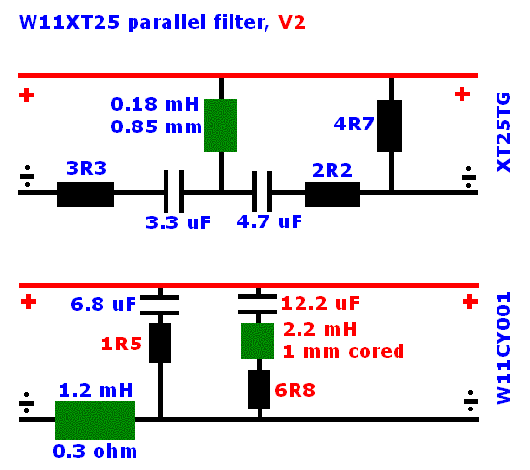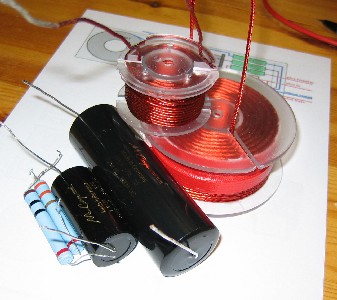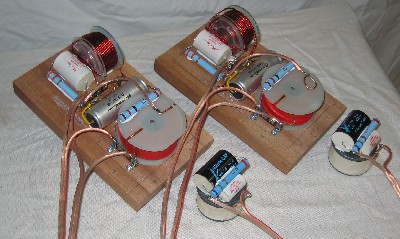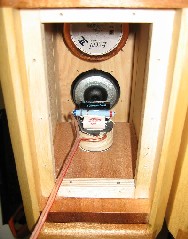SEAS W11CY001 + Vifa XT25TG-30-04 Copyright 2005 © Troels Gravesen
The W11CY001 drivers have been lingering on my driver shelf for more than a year since the beginning of the Point75 project. These drivers were much too small for handling the midrange down to 300 Hz in a dipole construction. Reading a Spanish website I came across a construction utilising the W11CY001 driver and a no longer available SEAS 19 mm soft-dome in a very small construction. So why not give it a shot? Doing some box simulation suggested that this driver could deliver some decent bass down to 60 Hz. Not bad.
Eventually I made a pair of test cabs and indeed these tiny fellows were capable of delivering some amazingly good bass. Well, forget about earthquakes and the like, this is still a 4" driver but the bass has a remarkable, almost tangible quality that beats my LS35A reference in this class. The LS35A has more volume and weight in the lower midrange, but in most cases I'd much prefer this construction for it's lively and engaging sound. Be
aware there are things a 4" driver will never do. Cabinet
colouration is minor due to the small rigid
structure and in many ways it performs like a point
source throwing a wide soundstage and some amazing bass
that defies its size. But don't be fooled to believe this
is a speaker that does it all. Going from a 4"
driver to a 5" drivers in most cases delivers a more
realistic upper bass/lower midrange and moving further up
to a 6" driver we may be able to also hear/feel some
realistic bass. But 5" and 6" drivers are
seldom good up to 4 kHz. Some people will like it so much that they would want to add a sub-woofer taking care of the 30-80 Hz range. BUT, this will not make the upper bass/lower midrange (80-320 Hz) more weighty and realistic. So, then we might let the sub-woofer go up to 160 Hz. Yes, but then we're into the usual trouble of having a dividing network in the most important frequency range again. Not to mention that integrating a sub-woofer (or two sub-woofers) to a pair satellites in this area is not an easy task at all. Usually some of what the small speaker was good at - coherence - is lost. I might
be tempted to make this into a 2˝-way system by
applying another W11 driver, but then it wouldn't be
small any more. And it costs. And so the story continues.
All about compromises. Eventually I made both a parallel and a series crossover and did some fine-tuning to get the same response profile making it possible to compare the sonic qualities of these two filters. The series filter was also tried with Mundorf Tritec coils and Mundorf MCap Supreme capacitors to evaluate possible benefits of applying very expensive crossover components. These were compared to "over-the-counter" coils and capacitors. The drivers
The
cabinet can be made from 19 mm MDF and the port
panel from 12 mm MDF. All internal panels (except the
rear panel) are covered with 10 mm polyester foam and
behind the W11 driver on top of the crossover board some
additional Acoustilux is placed on the rear wall. I use 2
sheets of 10 x 20 x 4 cm (W x H x D). Take care not to
prevent free air flow to the vent.
The frequency
response from the series filter above. As can be seen the
W11 is capable of
Comparing the sound of the series and parallel filters: This was the most interesting part of the test and also the most troublesome as it is very seldom that a pair of speakers sound exactly the same and I had to swap drivers and repeat the tests to make sure my impressions were the same despite different drives being used. In have tried to summarise my impressions from the tests below:
W11DX series crossover: In case you want to try the Vifa DX25TG tweeter you just replace the XT25TG with the DX and you need to replace the 10-12.2 ohm series resistor by a 15 ohm resistor, the DX being slightly more efficient. In case you want a true monitor sound you can further fine-tune the midrange notch filter by using [3.9 mH + 10 ohm + 10 uF]. This further smoothes the 1-2 kHz frequency range where we see a minor depression, but smoothing this area is very revealing and it may be just a little too much. Try for yourself. Crossover component quality.
The difference in price of the above shown components is huge. Not to forget size! The Mundorf components have made it necessary to completely change the layout shown above. Initially I had planned to place the components on a 9 x 18 cm board and place it on the rear panel through the W11 hole. Not possible. So I'll make the rear panel detachable and mount the components directly here. And eventually a blend of Mundorf, Monacor and Jensen components were used.
W11 sound? I've had my wife helping me perform a triangle test. In three listening sessions I had to identify one session being different from the two others. Either I would hear the Mundorf once and the Monacor twice or visa versa. The easiest way to perform this is to be blindfolded. This is technically not an easy test to perform, as you have to wire up one speaker with the Mundorf stuff and the other with the Monacor stuff - and then you have to repeat the test changing the crossovers, as the drivers may sound slightly different. The frequency response from the two crossovers was the same within 0.5 dB. I another test I wanted to evaluate the 1.5 uF and 10 uF capacitors and this was somewhat easier as this could be done on the same speaker with two double toggle switches. The result was that I could not for sure determine which session was different from the other two. Simple as that. When I know what is playing I think I can hear minor differences where the Mundorf components may have slightly better transparency at the cost of a slightly more aggressive upper midrange/lower treble. Rather disappointing results after all. Finally I made a new triangle test where I replaced the two Mundorf Supreme caps with electrolytic capacitors. This should be the worst of all. I kept the Tritec coils and MOX resistors for this test. Here I could identify the session including the electrolytic caps, but even here I wasn't 100% sure. The electrolytic capacitors had a softer sound compared to the Supreme caps. Actually my wife preferred the sound of the electrolytic caps to the Supreme caps, but she may have been biased, as she knew what was playing. I have read reports on similar tests where a specific capacitor was rated 5% above another capacitor and to my mind this is nonsense. The procedure for making these tests was never reported and I have a suspicion that a certain brand of capacitors have been in place for some time and then replaced by another brand and those who have done so may have better hearing and memory than I, but in many cases I think the differences are grossly overstated. I once had a mail stating that a fresh soldering sounded the best to further deteriorate over the next few hours after which the "sound" slightly improved again. Nonsense! The problem often is that when we have spent an indecent amount of money on some fancy components we are ready to believe whatever, and when we know what is playing we are incapable of being un-biased. Coils: When it comes to coils I try to avoid coils that are just wound on a bobbin and kept in place by tape. Preferably they should be have been heat sealed to make the wire lacquer starts melting and turning the windings into a solid block. The important thing here is that the coil is rock solid and doesn't vibrate - especially if placed inside the woofer cabinet. At http://www.northcreekmusic.com/COILS.html I have seen the recommendation of dipping your coils in shellac to glue the windings together. Seems like a good idea. The resistance of the coil doesn't necessarily has to be low. I depends on what it is intended for. Usually the coil in series with a woofer has to have low resistance. Otherwise it will reduce efficiency, increase the Q of the driver and change the intended frequency response. I don't find foil coils better than properly wound and baked coils made from round wire. And I don't like all the plastic that separates the windings in foil coils. Oil impregnated paper has been seen but the price may be prohibitive. I haven't done a triangle test on coils as I don't have much hope of hearing anything. But I should some day. Resistors: I don't find MOX resistors better than ordinary wire wound resistors. I have a few very expensive film resistors and I don't think these are superior to either of the two others. In the German magazine HIFI-Image you usually can see the crossovers from some very high-end loudspeakers where standard wire wound resistors are used. If other resistors were superior I should think these would be found here but in the commercial world, price is an important matter down to the penny. If you have a speaker with a single series resistor to the tweeter, try to make a triangle test and challenge your hearing. This only requires a single switch. Clearly there are sonic differences between different brands and types of crossover components. But taking the example of the "-DX" LCR circuit above, this minor change in frequency response has a much more dramatic impact on sound than any other change in crossover component will ever have. So we have to be very much sure that this is the voicing that we go for before we start fiddling with expensive crossover components. There are numerous examples of great loudspeakers that do not use high-end crossover components. Yet they may please the ear and possibly the change of crossover components may not necessarily go well with the intended voicing of the construction. W11XT correspondence: TG: TG: DN: The series is slightly more forward, though I still find the overall presentation laid back; just a little less so with the series. Is there less depth? A bit less I think, but I'm still using the valve amp, and depth is one of its fortés. But I understand what you mean by "charming and engaging". Indeed it is. And lush? Yes, and not so subtle here. In fact, I feel as though I'm getting a double dose of valve-like lushness! But it's the presentation of imagery that seems most distinctive to me. It's hard to explain what I mean by this. Images stand out in the soundstage in a "more real than life" manner - they're more vivid and more present. I'd have to say they sound "enhanced". I don't think this is entirely natural, but it is very entertaining. I'm reminded a little of those Enoch Light Project 3 "super-stereo" orchestral recordings of the sixties. Is this what you meant by "look at me" and "it's coming from here"? So . . . lushness and enhanced imaging. I'm inclined to say the parallel version is the more natural, but these speakers sure are entertaining in their present form. I'll give it a week to decide whether it becomes a bit much over time. Again though, I find them a bit too laid back with some recordings, and a touch more bite in the highs wouldn't go astray. Seems weird in view of the flat frequency response, but as you say, this is a very gentle tweeter. DN: DN: I'd been impressed with how these speakers sounded with baroque music, but I hadn't really tried them with large-scale classical. I think the most demanding classical recording I have is Claudio Abbado's Berlioz Te Deum (Deutsche Grammophon ) - orchestra, organ and six choirs in a splendid performance, everything coming together in a series of huge crescendos. I've never tried this with small speakers and a 30 watt amp, and I probably won't again. The W11XTs not surprisingly couldn't do it justice. These are not general-purpose speakers, but they did put up a good fight. Nevertheless, I'll be leaving my Telarc Beethoven's 9th in its case! Moving on to something more appropriate, I put on Mary Black's "The Holy Ground". Regardless of the amplifier type, I found the original 2.5 clone gave its usual excessive sibilance and a reedy colouration, which simply ruined her voice - much better with the 2.95 incidentally. Well, the W11XT25 just loved this stuff. No reediness here; rather a purity of tone coupled with airiness, but also an inviting warmth. Lovely voice, and I found myself absorbed in the melodies and emotion of it all. Sibilance was slightly prominent, but this is an over-sibilant recording in places. With these speakers, I'm occasionally aware of it but it doesn't detract from the enjoyment. Female vocals again: I hadn't played "Bib & Tuck" since my initial series vs parallel mono comparison. I could be wrong, but I think the series is more tolerant of this recording than was the parallel. In any case, I was stunned to listen again to the bass line on "Cropper Lads". You know what I mean? The way it bounces and snakes along behind Maddy's vocal? I mean - heck - a 4-inch woofer shouldn't be able to reproduce this so well. Bloody amazing. These speakers can play bass! And this with a valve amp! Mind you, the AMC was always better here than my Dynaco. Sure, it's a "rounder" bass than a solid state amp gives, but not flabby like many classic valve jobs (including the Dynaco). Finally, some very different vocals, but still the female variety - Patricia Barber's "Verse". I played the whole CD through twice! It sounded so good. Ms Barber was . . . there . . . in the room. I could have reached out and kissed the lady! Ken Kessler would have loved it. I'd heard this one not too long before with the parallel filter in place and it definitely hadn't sounded like this. For example, the piano was as real as any small speaker could make it. Indeed, I'd say it was more real than with many bigger speakers. Luscious jazz guitar too. But the voice . . .! Sorry for raving, but I'm listening to this again in the background as I write. (Just got a shock from the bass drum on track 4.) Gotta see if solid state does the same with these tracks. Or is the W11XT25-series a valve-lover's speaker? Lots of fun to be had here! I hesitate to say it, but I'm tempted to think these speakers are improving, particularly the tweeter. Maybe it's my imagination, but I'm not convinced that's the case. I know what NN would say! Anyway, the laid-back presentation is less troublesome, and I'm more aware of detail in the highs than I was. They seem to have "opened up", from the top down through the midrange. I still wouldn't mind bringing up the tweeter level a little, but I'll see how they go with solid state. One thing I am sure of: With the right music, the AMC amp, Rotel 965BX and these speakers (in series form at least) make a really nice system. |
.jpg)
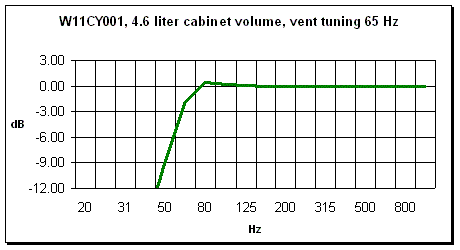
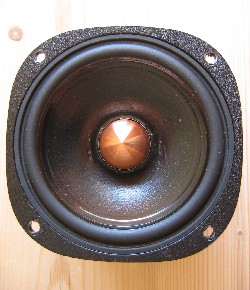
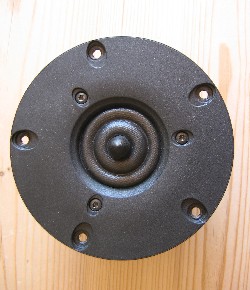
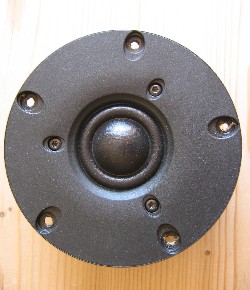
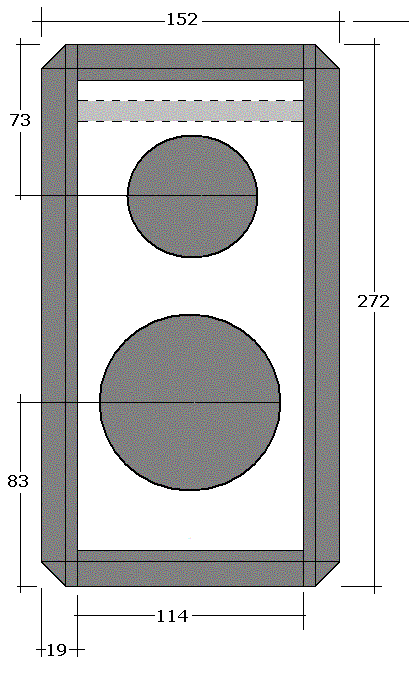
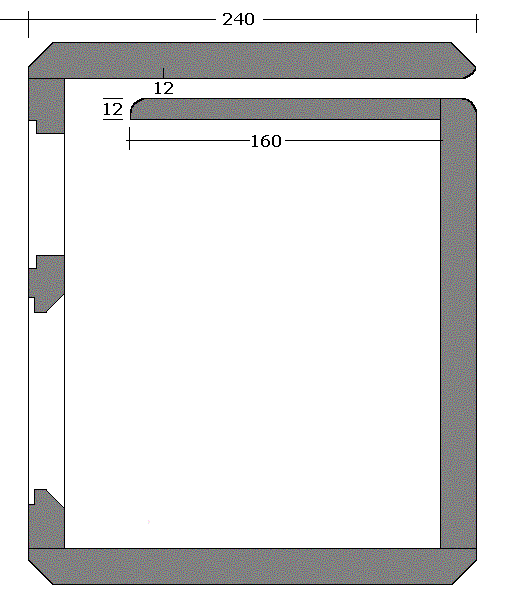
.jpg)
.jpg)
.jpg)
.jpg)
